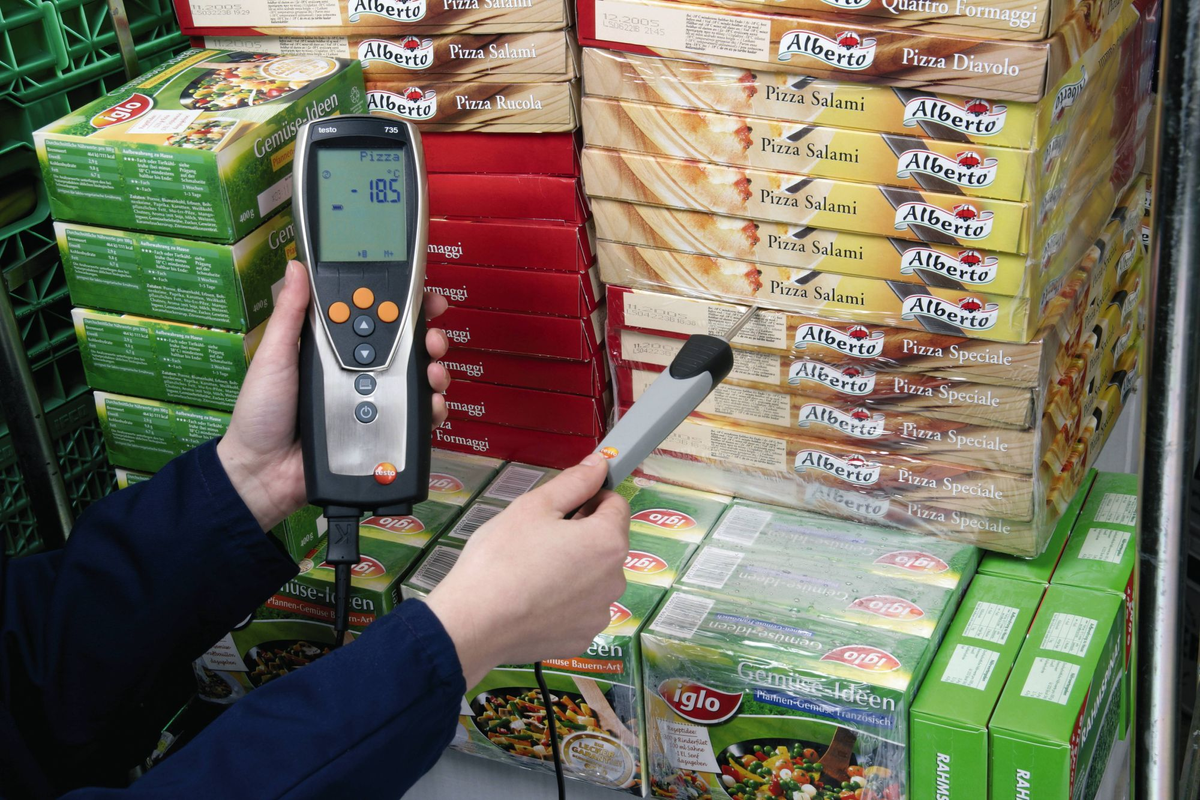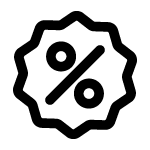
Practical knowledge in series
Only if you understand what is behind the measurement of a physical measurement parameter can you interpret the results correctly and make the right decisions. You are best equiped for your daily measurement jobs.
Our know-how provides you with:
Input on the most important basics for the measurement of the physical parameters: Temperature, flow velocity, humidity, pressure, CO2 and infrared.
Tips on correct measurement and for avoiding measurement errors.
Info on suitable Testo instruments for your applications.
Temperature
How to measure temperature correctly?
After time, temperature is the most commonly measured physical parameter. What would the weather report be without temperature information?
In addition to air temperature, temperature is also measured in a multitude of other media. Whether the operating temperature of an industrial plant, the flow and return temperatures of radiators, the storage temperature of drugs or the core temperature of a yoghurt: In contrast to the weather forecast, the temperature values in these areas must be precise and correct. Only this way can you fulfil standards and avoid damage to valuable goods.
With the right background knowledge and practical tips, you are ready to carry out all your measurement tasks.
Physical principles
Physical principles of the measurement parameter temperature
When a physicist speaks of temperature, he means the measure of energy inherent in a body. This energy is possessed by a body due to the random motion of its atoms or molecules. If the particles move faster, then the temperature increases. Temperature is thus a state variable. Together with mass, heat capacity and others, temperature describes the energy content of a body, or, as it often expressed in physics, a system.
Or more briefly:
Introduction of heat energy leads to an increase of particle speed: Temperature increases
Introduction of heat energy leads to a decrease of particle speed: Temperature decreases
When a body no longer contains any heat energy, its molecules are at rest. In reality, this state cannot be achieved. It is referred to as the absolute zero point, because there is no state with less energy. It is allocated the value 0 K (Kelvin). For this reason, Kelvin temperature is always a positive parameter.
Temperature could be directly measured in energy units. However, the expression of temperature in degrees has a long tradition, and is anchored in physics. This is why it has, for practical reasons, remained so to this day.
Please note:
Temperature is expressed in Kelvin (K), and for day-to-day use in degrees Celcius (°C), or in Fahrenheit (°F) (in the USA and elsewhere).
Among experts, temperature differences are always referred to in Kelvin.
Conversion: 1K º 1°C = 9/5 °F
Conversion formula according to DIN 1345:
tC = 5/9 (tF - 32) = TK - 273.15
TK = 273.15 + tC
tF = 1.8 tC + 32
How to measure?
How is measuring equipment generally set up?
The probe: Contains the sensor. There are different probe designs for different applications.
Probe shaft with sensor: Converts the physical measurement value into an electrical signal.
The connection cable: Connects the measuring instrument and the probe (sensor).
The measuring instrument: Converts probe signal into display values (AD conversion).
The resolution: Smallest legible subdivision of the measuring unit.
The resolution
In this example, the display shows 22.3 °C, i.e the resolution is 0.1 °C. If 22.34 °C were displayed, the resolution would be 0.01 °C. In digital instruments, the last position in the display can jump by + / - 1 unit. This smallest unit is called a digit.
Example: Display 22.3 °C
Display -1 digit 22.2 °C; display +1 digit 22.4 °C.
The poorer the resolution of a measuring instrument, the greater the effect of a digit jump on the accuracy of the measuring instrument.
Sensors: How it works
The selection of the right sensor determines the accuracy of the measurement result. However, there is no sensor which can do everything equally well:
A wide measuring range as a rule means a limited accuracy.
Especially fast probes are usually unsuitable for tough day-to-day measurements.
The design decides which probe is optimally suitable for which measurement task.
Probes: Design
What is a probe's job?
Temperature probes take on the temperature of a medium and transfer it to the sensor. To do this, the probe material must first adapt to the outside temperature. For this reason, it is never the temperature of the medium which is measured, but the temperature of the probe / sensor.
The probe requires a certain period of time to settle to the substance being measured. A probe has recognized the temperature of the substance being measured when its temperature is 99 % identical to the outside temperature. This period is known as the t99 period.
Which probe designs are there?
There are different probe designs depending on the application purpose. Just as one uses a different knife to cut bread than to cut meat, for example, there are different probes for temperature measurement.
Immersion/penetration probes
Acclimatization of the temperature of the probe and the liquid.
Reducing the acclimatization time by motion.
t99 ideally approx. 0.5 secs.
Air probes
Reduced heat transfer between air and sensor.
Sensor is free; good for air flow impact.
t99 ideally approx. 7 secs.
Surface probes
Large temperature jump, as air works as an insulator.
Cancellation of air insulation through contact thermometer.
t99 ideally approx. 3 secs.
Avoiding measurement errors – Tips for correct measurement
Immersion and penetration measurement
In immersion and penetration measurements, the temperature probe is inserted directly into the measurement object. The measurement is finished as soon as the t99 time is reached.
The most common measurement errors
If the temperature probe is colder than the measurement object, then energy in the form of heat is withdrawn from the measurement object in the vicinity of the probe. If it is warmer than the measurement object, then heat is introduced to the object. The mass ratio of the probe and the medium should also be taken into account: The greater this is, the more energy is withdrawn from the measurement object. Since this energy withdrawal means that the actual temperature of the object is no longer measured, a too high mass of the probe can lead to measurement errors.
Tips for correct penetration measurement
The penetration or immersion depth should be the 10 to 15 times the diameter of the probe.
For immersion measurements in liquids, the liquid should be kept constantly in motion.
In the ideal case, t99 is reached after approx. 0.5 seconds.
Surface measurement
In surface measurements, the probe head is placed vertically onto the surface. Here it is important to ensure that neither the contact surface of the probe head, nor the the measurement object, are uneven, as this can falsify the measurement.
Tips for measuring surface temperature
Place probe tip flat onto surface.
Do not move the probe during the measurement.
Apply constant and sufficient pressure.
Use low-mass surface probe.
In the ideal case, t99 is reached after approx. 3 seconds.
Measurement of air temperature
For measurement of moving air, the measurement probe is simply introduced to the environment to be measured. In order to achieve a short acclimatization time, ideally use an air probe with an exposed sensor. The measurement result can be optimized by moving the probe in the air at 2 m/s during the measurement.
Tips for measuring air temperature
Use air probe with exposed sensor (not penetration or surface probes).
Move the probe at 2 m/s during the measurement.
Hold the probe away from your body.
Use radiation-protected probes.
In the ideal case, t99 is reached after approx. 7 seconds.




